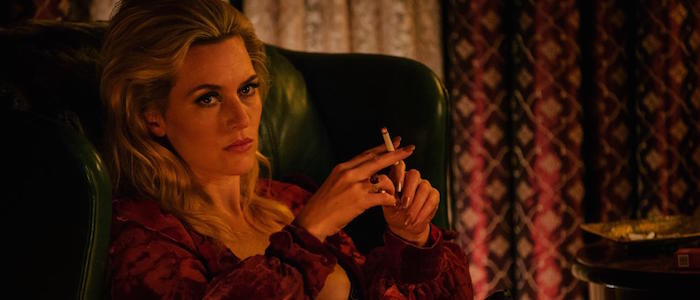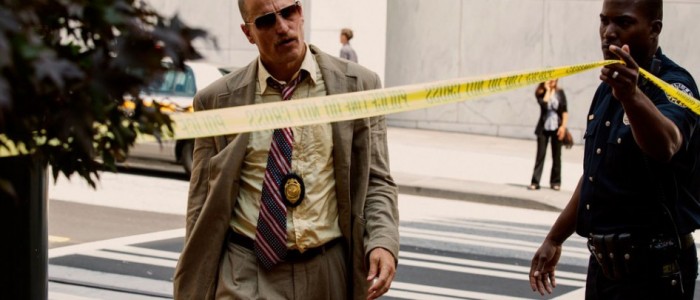Interview: 'Triple 9' Director John Hillcoat Strives For Authenticity
John Hillcoat is drawn to extreme worlds. How his characters embrace, reject or accept their brutal environments is a running idea throughout much of the director's work. The filmmaker's latest picture, Triple 9, is definitely a John Hillcoat film, filled with pain and violence. He's never one to shy away from reality. In fact, he fights for it.
After the jump, read our John Hillcoat interview.
Here's what John Hillcoat had to say about grounding his crime thriller in reality, allowing characters to inform the story and filmmaking, and some particularly exciting shots in the film:
Triple 9 reminds me of Lawless, particularly that balance between unpleasantness and entertainment. How do you go about showing extreme violence while also making an accessible film?
Especially with crime-action thrillers, I feel like in recent years they've become more and more like cartoons. There are cliches. I know what's coming. I hate that experience of when I'm in cinema and just start to know what's coming, and I don't buy the world they're presenting. When I see a film I want to be transported to another time or place.
What I tried to do is a lot of research. In the films I love, you just get swept up in the details, and that gives you opportunities to do things. It's entertaining, because there's something about crime thrillers that have this relentless energy and suspense, so that's a form of entertainment, and yet it's kind of disturbing sometimes. The matter-of-fact, brutal reality of the world can be a scary thing, and I think that adds to the dramatic tension. Does that make sense?
Absolutely.
I think that's the trick: you take these entertaining, traditional, classical worlds, and then you throw in more realism and unpredictability.
 How much research did you do?
How much research did you do?
Oh, years of research. This has been six years in the making. We had technical advisors come in as well, and they looked at the script and had input. The advisors were on set all the time, and some of them were even on camera, working with the actors. I'm talking about gang unit guys and ex-Latino gang members. I say "ex" — and we decided to do this with the Russian mob as well — because... well...
[Laughs] I understand.
We talked to DEA agents, the FBI, and all the law enforcement groups. We also watched documentaries, read articles, and looked at books and photographs. There is a lot online, but with sources, that's a little tricky. You have to be careful.
Like, as an example, when I was doing the Russian-Israeli mob research, I came across this FBI bust in 2008, in Iowa, that was a massive raid, where they took down over 300 guys. It was a kosher butcher, and there was a meth lab in the middle of the shop; it was this big front with illegal immigrants. Actually, it was a Hasidic butcher, and I thought, Wow, that's a great front we haven't seen in a film. Likewise, spoiler alerts...
[Spoiler Alert]
In the robbery, when it comes to what can go wrong in a big heist, you do your research. I'm conscious of films that I love that have pulled it off massively, but how do we bring in something we haven't seen? Researching bank heists, in particular what they bury in money, I thought it was great. There's always an element of chaos with these things.
[Spoilers Over]That scene you mentioned, it really evoked the sense of madness you got in the red band trailer. It feels almost like a nightmare.
Yeah. I also liked the idea of making it rich colors. "Color noir" is how I'm describing it. In the crime world, it's very murky and the lines are blurred, so that adds to the tension.
 You do start the film off with a very darkly lit scene, though. How did you want the aesthetic and camera moves to reflect the story?
You do start the film off with a very darkly lit scene, though. How did you want the aesthetic and camera moves to reflect the story?
Well, Nicolas Karakatsanis is a great Belgium DP. I saw Bullhead, and I just loved his work. He and I did some commercials and stuff. I discovered he has a fantastic approach. Nicolas is a photographer, so he has got a real photographic eye. He has that European tradition: you work with very little and you work fast.
We spent a lot of time working together, planning the production design and the locations. For me, I'm always thinking the location is equal to the main character. With that world in mind, we discussed ways of articulating all these things — to create tension, reflect the characters, and feel like we're showing this world in a different light.
Something we came across, especially in movies with dirty cops, is that the color blue predominates. West Coast and East Coast is always blue, so we thought, If we're in Atlanta, in the summer, let's go red. We made a choice to go very color noir with that lighting. We looked at some black-and-white noir films, and we just imagined if you added color to it.
There are some bold lighting choices. When Woody Harrelson and Casey Affleck are in the bar, their faces are lit very differently, and it tells you a lot about the two characters.
You want to try and use all the tools for cinema, or at least I've tried to do that. Especially with this genre, it started to get lazy; it's all about the action, cameras are everywhere and they hope for the best. You try to find ways to visually tell the story, to reflect the character choices and narrative. It all comes out of the characters. Weirdly, I think that's been reversed, where you're just hitting a button and the characters are just following a routine, as opposed to the character initiating all that.
There are a few specific shots I want to ask about. For starters, the shot of Woody Harrelson walking into the bank, and just the way you see his jacket open up is strangely hypnotic.
Our wardrobe designer is a genius, and she's been working with me since The Proposition. She's got a great eye for...once she knows the cast, it's a combination of who the person is — the innate qualities — and taking in his character.
What is his character really about? How do we express that? He's very irreverent, he's kind of a wildcard, and he's kind of out of control. Well, not kind of, he is out of control. He has a sloppiness a part of that mess, so his wardrobe is not pressed. She deliberately made fabrics that were loose and sloppy for him, and that goes with his whole body language. It all works together, if that makes sense.
There's a real problem with contemporary films, where they just take the clothes off the rack, as opposed to designing and making them from scratch, for the character. Actually, there are lots of discussions about the cost of that in pre-production. You'll hear, "Just go to any shop and dress them up," but Margot believes the wardrobe has to be a part of the character. Then you add in the choreography of the scene and what he brings to it, and that's what you get it.
 There's a duality to the character. He's a mess, but not only is he a good brother and uncle, he's also the smartest guy in the movie.
There's a duality to the character. He's a mess, but not only is he a good brother and uncle, he's also the smartest guy in the movie.
Yeah, yeah, that makes him more dangerous, in a way, because he thinks outside of the box. He has a maverick and irreverent thing of, "I don't give a fuck." He had just done True Detective, and he didn't want to play another detective straight off the bat from that, so it was a totally different approach. He's a maniac on the roads, thinks outside of the box, and is a loose cannon, which is the opposite of True Detective.
Looking back on the making of the film, were any shots particularly challenging?
It was raid [sequence], which was in the middle of the projects. That was all actually one shot, but the reason we have one or two cuts in it, which isn't about pacing or tension, is: with one shot, you start to notice it's one shot. I do love that, and we do have that when they leave the bank and go to the car, but we broke that slightly. When we designed these scenes, we thought, We don't want to draw attention, where it's just a technical showoff thing.
I like the idea that the content and the style are really melded together. I guess maybe that's a bit traditional, but it also enhances the story and the character. Yeah, that was very challenging, because there's so much going on in different rooms. Most of the guys were a real gang unit, and the actors had to feel like they were completely credible next to these guys — and that was a tricky one.
Triple 9 is now in theaters.
Here's the official synopsis:
In Triple 9, a crew of dirty cops is blackmailed by the Russian mob to execute a virtually impossible heist and the only way to pull it off is to manufacture a 999, police code for "officer down." Their plan is turned upside down when the unsuspecting rookie they set up to die foils the attack, triggering a breakneck action-packed finale tangled with double-crosses, greed and revenge.
